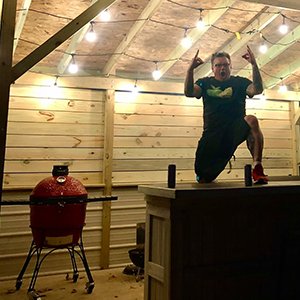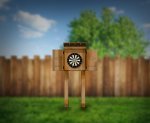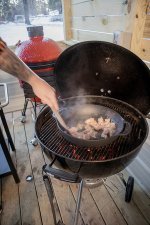How to set up your grill for two-zone heating
What is two-zone heating (or direct vs. indirect heat) on a grill, how do you set it up, and when do you use it? Avoid some common pitfalls with these easy instructions.
For many years when I first began grilling, I would just dump hot charcoal onto the bottom of a grill and start cooking. At the time, I was unaware of the benefits of two-zone cooking with direct vs. indirect heat.
With all of my heat source (coals) centered directly under my food, I would spend most of my time continuously flipping the food to keep it from getting burned, or, every time I lifted the lid (which was way too often), I was using a squirt bottle to shoot water on the flames that resulted from grease directly dripping off the meat and onto the hot coals.
After gaining experience over the years, I now recommend two-zone heating any time and every time you grill. There's nothing complicated about it: The two-zone method essentially just means setting up all of your charcoal on one half of the grill and no charcoal on the other half. This creates one area of your grill that utilizes direct (radiant) heat and is great for high-temperature cooking such as searing meat and blistering vegetables. The other side (without the coals) uses indirect (convection) heat and is great for slower cooking of thicker pieces of meat, before or after a sear. The indirect area also serves as the zone where you can move greasy food temporarily to help prevent flare-ups.
If you're using a kettle-style grill that has a curved shape, you will notice that stacking the coals to one side of the grill will naturally form a slope that creates a nice transition from a hot to a warm to a "cool" zone.
When to use direct vs. indirect heat
As mentioned above, direct (radiant) heat occurs when the heat source is directly applied to the food that is being cooked, and it produces a higher heat than indirect heat. Typically, direct heat in grilling is used for thinner pieces of meat that can be cooked through more quickly and/or that you want to have a seared surface. These may include hamburgers, steaks, individual cuts of chicken, or fillets of fish. Direct heat can also be used to quickly cook vegetables (to give them an extra crunch) or to blister the outside of the vegetable for a great char taste.
Indirect (convection) heat occurs when the heat source is set up to the side or some distance from the food being cooked. Keeping your grill closed helps the heat surround your food, even though it is not applied directly. Indirect heat is the primary method used when smoking meat or vegetables. Indirect heat allows for a lower temperature, which in turn creates a slower cooking process — the heat can penetrate the food to reach the proper internal temperature without burning the exterior of the food. Indirect heat is useful for thicker and tougher cuts of meat such as whole poultry, whole pork butts, hams, ribs, brisket, roasts. Indirect is also a great method to use with wood chips or wood chunks when you want to add a smoky flavor to vegetables (perhaps for use in a savory salsa!).
The control you gain from using two-zone heating will bump up your grilling game to "next level" with very little practice. Now that you know how to set up your zones and some basic guidelines for when to use them, you'll find yourself experimenting and gaining confidence with these techniques in no time.
Next: How to clean and maintain your grills
- Home
- How-To Grilling Basics
- How to Set Up Your Grill for Two-Zone Heating



